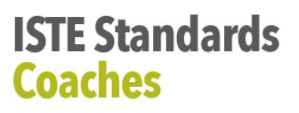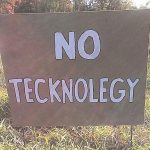
Digital Citizenship
Technology coaches model and promote digital citizenship.
 a. Digital Equity: Model and promote strategies for achieving equitable access to digital tools and resources and technology-related best practices for all students and teachers
a. Digital Equity: Model and promote strategies for achieving equitable access to digital tools and resources and technology-related best practices for all students and teachers
b. Safe, Healthy, Legal and Ethical Use: Model and facilitate safe, healthy, legal, and ethical uses of digital information and technologies
c. Diversity, Cultural Understanding, and Global Awareness: Model and promote diversity, cultural understanding, and global awareness by using digital-age communication and collaboration tools to interact locally and globally with students, peers, parents, and the larger community.
Digital Citizenship Summary:
In our first course of this program, we developed a mission statement that would guide our learning as we worked through our course work. My mission statement seemed lofty at the time, but each of the courses has brought new knowledge and understanding.
To support a paradigm shift in teaching by working collaboratively with colleagues to develop authentic learning through integrating technology resources with student interest. Through implementing technology-rich interest-driven learning opportunities, we will grow students digital literacy competence. Concurrently, advocating for building relationships with students while promoting moral and ethical results. In this approach, generate measurable student growth.
Digital Equity: Students do not come to us with the same backgrounds, knowledge, and abilities. In reality, we receive students with IEP’s and 504’s, but much more that are undiagnosed. It does not make sense to use a one size fits all curriculum for that imaginary average student that doesn’t exist. Starting every student in the same place will never ensure that they all learn in the same way and at the same time.
The Universal Design for Learning framework provides tools to create and design lessons with variability and tailorable options, allowing all learners to grow from where they are and not where we would have imagined them to be. Inclusive practices that address the needs of diverse learners creates student-centered classrooms which inspire learning. Students become active learners, provided with fair and equal opportunities to learn.
UDL provide best practices including technology integration with clear, meaningful goals within ongoing evaluation and feedback be dynamic enough to provide effective instruction for all learners. (See Post: Universal Design For Learning: Using Digital Tools To Meet All Learner’s Needs)
Safe, Healthy, Legal and Ethical Use: Digital Citizenship includes teaching students how to learn. The school is one of the last “safe places” for young adults to learn the lessons they need to navigate the consequences of their choices. Many students need this space to facilitate understanding their roles and responsibilities in the community.
Using technology as the tool that connects the standards to the content can increase learning. Computer Science is a growing field that encourages discovering meaning through the construction of knowledge and the communication of ideas through our digitally connected world. This approach can thrive when inquiry, exploration, and play, continue to be valued and encouraged as meaningful learning experiences. Educational technology must replace its focus from the technologies and content to connected learning. (See Post: Digital Readiness Project )
Diversity, Cultural Understanding, and Global Awareness: Students learn about diversity, through adults modeling a positive and welcoming environment. By creating a learning environment, in which the student connects what they are interested in to what they are learning, learning increases. The student’s cognitive development begins to integrate the rules of society into their understanding of what is good or bad, idealized on what is social responsibility, leadership, and citizenship. Developing this cultural understanding of their environment can then be strength through global awareness, teaching them lifelong learning strategies. (See Post: My Evolving Philosophy of Digital Education)
Fulfilling the Digital Citizenship Standards:
Through my position as the Computer Science Program Specialist for OSPI, I work to ensure that digital equity in implementation as an essential element of the Computer Science standards. The Digital Citizenship Standards through the priority of equity integrated into the essential questions fulfills this standard.
Digital Equity:
Digital equity is a priority for Computer Science and a priority focus for me. As a computer science graduate in the early 90’s, I know first hand the issues that women and minorities face, for me this is personal. Lack of access for underrepresented groups does not only deny them opportunities to begin pathways toward high-paying, high-demand careers. It also limits students from learning the literacy skills of the 21st century. Studying computer science not only enables careers in computing but provides skills such as logic and critical thinking. I lead the Computer Science implementation team and develop strategies through equity as a lens.
Safe, Healthy, Legal and Ethical Use/Diversity, Cultural Understanding, and Global Awareness:
Computer Science and Educational Technology standards complement each other. As I work with districts and schools implementing the computer science standards, it is often beneficial to expand the educational technology already part of the curriculum. Both Computer Science and Educational Technology can work together to develop fundamental computational thinking and programming concepts. Concepts enhanced through hands-on unplugged or technology exercises with a variety of interactive digital tools and technology toys. Instruction will focus on developing students that can work independently and collaboratively using age appropriate digital media.
Both standards require that teachers model and facilitate lessons that promote safe, healthy, legal and ethical uses of digital information and technologies. The both standards promote responsible digital citizens and curriculum benefits with the integration into the classroom to support the instructional environment and outcomes. I work with districts and school on implementing a curriculum that is age appropriate and is more culturally diverse while supporting coding and educational technology.
Posts:
Universal Design for Learning: Using digital tools to meet all learner’s needs
Digital tools, beyond personal assistive technologies, can be used for all students to become learners through strategies that remove barriers. To help teachers and administrators understand how strategies or tools could be implemented is Universal Design for Learning (UDL). These principles come from the work of Vygotsky, Bloom, and cognitive neuroscience where by understanding the needs of students, teachers can modify the curriculum to meet the needs of all students.
read more
My Evolving Philosophy of Digital Education
Mission Statement
To support a paradigm shift in teaching by working collaboratively with colleagues to develop authentic learning through integrating technology resources with student interest. Through implementing technology-rich interest-driven learning opportunities, growing students Digital Literacy competence. Concurrently advocating for building relationships with students while promoting moral and ethical results. In this approach, generate measurable student growth.
This mission statement is the first in what I hope to be a series of statements that show growth in both understanding and implementation of digital education. I would love to have feedback.

Digital Readiness Project
During this, the first class of my Digital Education Leadership program, we looked at the idea of "Digital Readiness" as it pertains to our districts. The basis for our assignment resides in the ISTE Coaching Standard 5 - Digital Citizenship.
read more